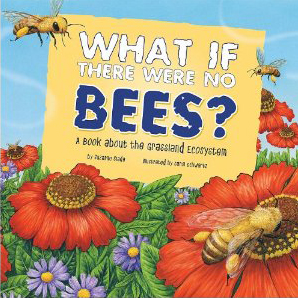
The Horn Book website has lots of material of interest to teachers. Here are some areas to explore. And follow us on Twitter: #lollysclass
|
Interviews with authors and illustrators Recommended books -- reviews and themed book lists |
School -- reading in school, author visits, and more Suggestion box: what else to you want to see in Lolly's Classroom? |
Teaching perspective to first graders
Perspective is a thing so integral to understanding a story.
As a first grade teacher, I have found that teaching about a character’s perspective is at times an easier task than having students contemplate an author’s purpose. I have come to the conclusion that somehow characters are more tangible to students. They feel more real. They are living, acting, speaking things in the story, so of course they must think something too! Right?
Authors, however, are an abstract people for them. Although they create a book’s very words and images, they are removed from the story. For an elementary school child, understanding that this person has a message to get across is not only an exceptionally high level skill, but it can also be downright confusing.
Luckily two authors came to my rescue as I attempted to undergo teaching this comprehension skill. These authors have a clear purpose and point of view. Their stories carry with them important messages and ideas —and these messages come from the most unlikely of places: informational texts.
Typically, when teaching students how to uncover an author’s purpose, I have thought strictly in terms of how they write. Do they write to entertain, to persuade, or to teach? This year I found that some authors can do a little bit of each.
Suzanne Slade and Martin Jenkins are two of these very authors. They write stories that are not only instantly engaging through their images and diagrams, but informative. Most importantly, embedded within their facts and illustrations are persuasive messages they are trying to convey.
 Suzanne Slade’s, What If There Were No Bees?: A Book About the Grassland Ecosystem, captures readers through its cause-and-effect plot. Students begin by learning about pollination, ecosystems, and food chains. Then, in a clever twist, Slade describes what would happen to these ecosystems if one animal, the honey bee, were simply removed. This text helps scholars learn about ecosystems and food chains, but there is also a message in this story: Bees are important and should stick around.
Suzanne Slade’s, What If There Were No Bees?: A Book About the Grassland Ecosystem, captures readers through its cause-and-effect plot. Students begin by learning about pollination, ecosystems, and food chains. Then, in a clever twist, Slade describes what would happen to these ecosystems if one animal, the honey bee, were simply removed. This text helps scholars learn about ecosystems and food chains, but there is also a message in this story: Bees are important and should stick around. Similarly, Martin Jenkins creates a beautiful picture book detailing the background and history of extinct and endangered animals. In Can We Save the Tiger? students are exposed to stunning illustrations of tigers, emus and other animals. They learn facts about these animals, yet, they also learn how to prevent the extinction of current endangered species. Like Slade, Jenkins has a purpose: tigers (and other animals!) are in danger, but are worth saving.
Similarly, Martin Jenkins creates a beautiful picture book detailing the background and history of extinct and endangered animals. In Can We Save the Tiger? students are exposed to stunning illustrations of tigers, emus and other animals. They learn facts about these animals, yet, they also learn how to prevent the extinction of current endangered species. Like Slade, Jenkins has a purpose: tigers (and other animals!) are in danger, but are worth saving.When Slade’s and Jenkins’ books are paired with more traditional informational texts, such as textbooks, or books in which facts are simply stated, their perspective becomes all the more clear and refined. I found these pairings integral to the teaching of this reading skill this year. Students were immediately able to discover the distinction between the tones of the texts and thus — the authors’ perspectives!
RELATED
RECOMMENDED
ALREADY A SUBSCRIBER? LOG IN
We are currently offering this content for free. Sign up now to activate your personal profile, where you can save articles for future viewing.







Add Comment :-
Be the first reader to comment.
Comment Policy:
Comment should not be empty !!!